Greece’s breathtaking scenery takes center stage in the thrilling new mystery film, Killer Heat. This gripping tale, directed by Philippe Lacôte, unfolds across some of the most stunning locations in the Mediterranean.
From the labyrinthine streets of Athens to the sun-kissed shores of Crete, we’ll take you on a journey through the Killer Heat filming locations that bring this captivating story to life.
The Essence of Killer Heat
Before we dive into the spectacular settings, let’s set the scene. Killer Heat follows Nick Bali, a seasoned private investigator, as he unravels a complex mystery on a remote Greek island.
When a seemingly straightforward rock-climbing accident turns out to be anything but, Bali finds himself entangled in a web of deceit, passion, and danger.
The story, based on Jo Nesbø’s “The Jealousy Man,” comes to life under the skillful direction of Philippe Lacôte.
As the mystery unfolds against the backdrop of beautiful Greek vistas, viewers are treated to a visual feast that’s as captivating as the plot itself.
Crete: Where Mystery Meets Mythology
The largest of the Greek islands, Crete, serves as the primary backdrop for Killer Heat. This Greek island, steeped in myth and history, provides a perfect setting for our tale of intrigue.
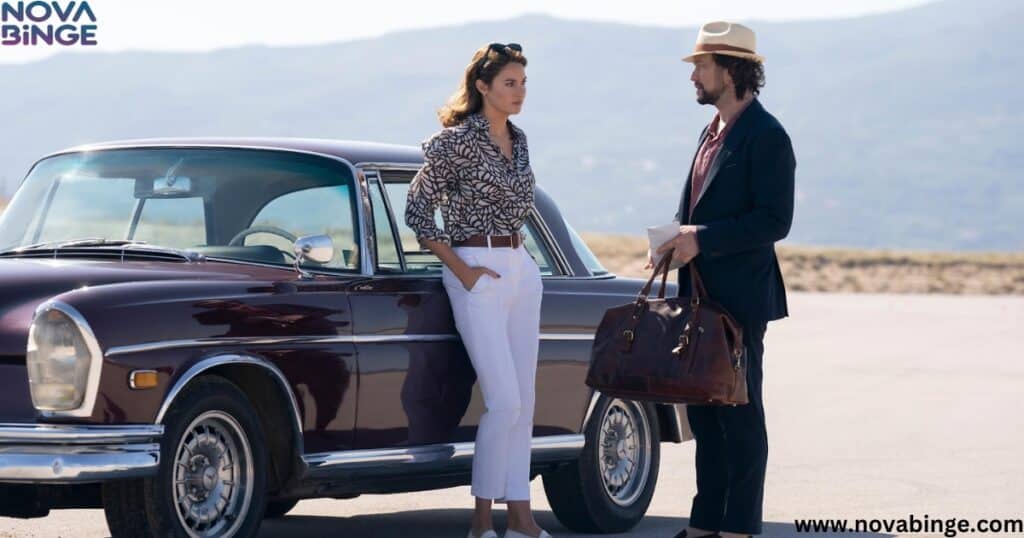
Chania’s Old Town: A Maze of Secrets
The narrow alleys and Venetian harbor of Chania’s Old Town play a crucial role in the film. Here’s why this location is perfect for Killer Heat:
- Atmospheric Depth: The winding streets create an air of mystery, perfect for clandestine meetings and covert pursuits.
- Historical Backdrop: The mix of Venetian, Ottoman, and Greek architecture adds layers of visual interest to every scene.
- Natural Light Play: The interplay of sunlight and shadow in the narrow alleys adds to the film’s noir-esque feel.
“Chania’s Old Town is a character in itself. Its history seeps through every stone, adding depth to our story,” – Philippe Lacôte, Director
Read more about this: The Wages of Fear (2024) Filming Locations
Balos Lagoon: Beauty with a Sinister Undercurrent
The stunning Balos Lagoon, with its turquoise waters and white sand, might seem an unlikely place for danger. Yet, in Killer Heat, it becomes a pivotal location. Here’s how this paradise-like setting enhances the film:
- Contrast: The beauty of the lagoon juxtaposes sharply with the dark events unfolding, creating a powerful visual metaphor.
- Isolation: The remote nature of Balos adds to the sense of being cut off from help, ramping up the tension.
- Action Backdrop: The unique landscape provides a stunning setting for crucial action sequences.
Fun Fact: The crew had to transport equipment to Balos by boat, as the location is inaccessible by road!
Athens: Ancient Mysteries in a Modern Metropolis
While much of Killer Heat unfolds on a Greek island, the story begins and ends in Athens. This juxtaposition of ancient and modern creates a compelling visual narrative.

Plaka: Where Past and Present Collide
The Plaka neighborhood, with its maze-like streets and neoclassical architecture, serves as a key location in the film. Here’s why Plaka works so well for Killer Heat:
- Timeless Atmosphere: The mix of ancient ruins and lived-in spaces creates a sense of timelessness that echoes the film’s themes.
- Natural Hiding Spots: The complex layout provides plenty of opportunities for chase scenes and hidden dangers.
- Cultural Richness: The abundance of local color adds depth to the film’s portrayal of Greek life.
Syntagma Square: The Heart of Modern Athens
Syntagma Square, the bustling center of modern Athens, plays a crucial role in the film’s opening and closing scenes. Its significance lies in:
- Symbolism: As the seat of Greek government, it represents the wider implications of the mystery.
- Contrast: The modern, busy square stands in stark contrast to the remote island locations, highlighting the protagonist’s journey.
- Cinematic Potential: The square’s grand buildings and constant activity provide a visually rich backdrop for key scenes.
Sounion: Where Legends Come Alive
The Cape of Sounion, home to the Temple of Poseidon, serves as a dramatic setting for several pivotal scenes in Killer Heat. This location brings a mythic quality to the modern mystery.
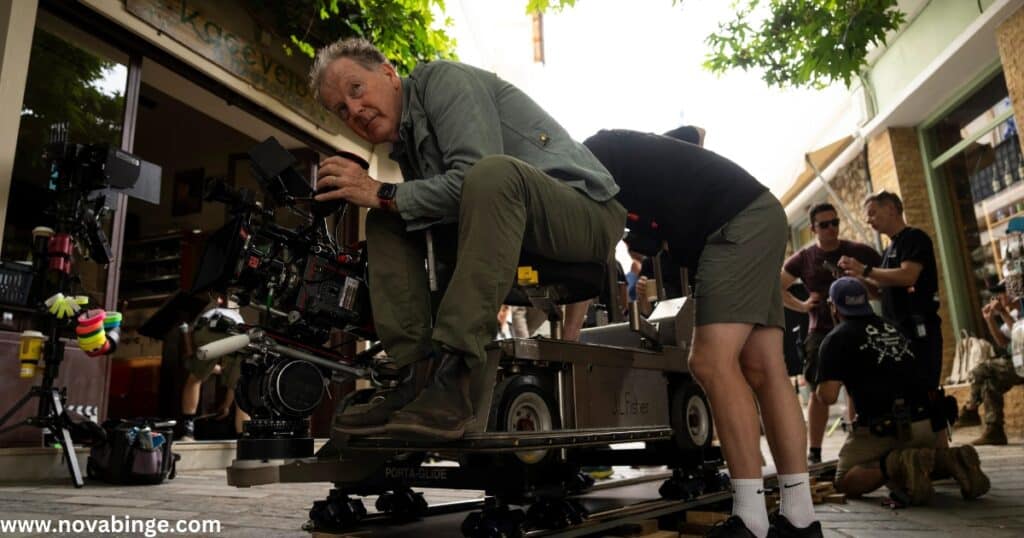
Temple of Poseidon: A Backdrop Worthy of Gods
The ancient Temple of Poseidon, perched on the edge of the Aegean Sea, plays a crucial role in the film. Its significance includes:
- Visual Drama: The temple’s commanding position on the cliff adds gravitas to key scenes.
- Mythological Connections: The temple’s dedication to Poseidon, god of the sea, ties into the film’s themes of power and unpredictability.
- Golden Hour Magic: Scenes shot during sunset at the temple are particularly stunning, adding a golden glow to the unfolding drama.
Table: Sounion Filming Schedule
| Time of Day | Scene Type | Atmosphere |
|---|---|---|
| Dawn | Contemplative | Mysterious, hopeful |
| Midday | Action | Harsh, revealing |
| Sunset | Climactic | Dramatic, intense |
Behind the Scenes: Bringing Killer Heat to Life
The process of filming Killer Heat across these diverse Greek locations was as exciting as the movie itself. Let’s peek behind the curtain:
Director’s Vision
Philippe Lacôte‘s approach to showcasing Greece in Killer Heat was multifaceted:
- Authenticity: Lacôte insisted on using real locations rather than sets, to capture the true essence of Greece.
- Light and Shadow: The director worked closely with his cinematographer to utilize Greece’s famous light to enhance the mood of each scene.
- Cultural Immersion: Local customs and traditions were incorporated into the script, adding depth to the storytelling.
Cast Experiences
The international cast of Killer Heat found filming in Greece to be both challenging and rewarding:
- Language Immersion: Many cast members took crash courses in Greek to add authenticity to their performances.
- Physical Demands: The varied landscapes required the actors to be in top physical condition, especially for scenes in Balos Lagoon and Sounion.
- Cultural Exchange: The cast spoke warmly of their interactions with local crew members and the insights gained into Greek culture.
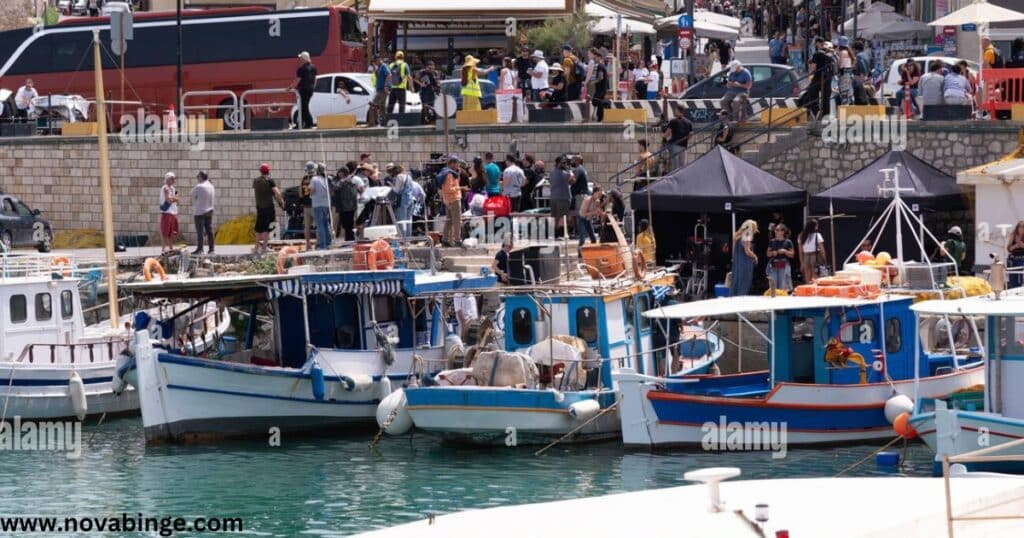
Local Impact
The filming of Killer Heat had a significant impact on the Greek film industry and local communities:
- Job Creation: Over 200 local crew members were employed during the production.
- Skill Development: The production provided valuable experience for Greek film professionals working on an international project.
- Economic Boost: Local businesses, from hotels to restaurants, benefited from the influx of cast and crew.
Greece as a Character: How Locations Shape the Story
In Killer Heat, Greece is more than just a backdrop. The locations play a crucial role in shaping the narrative and characters:
Crete: Island of Secrets
- The island’s rugged landscape mirrors the complexity of the mystery.
- Local legends and myths are woven into the plot, adding depth to the story.
- The isolation of certain locations heightens the sense of danger and urgency.
Athens: City of Contrasts
- The city’s mix of ancient and modern reflects the clash between old and new in the story.
- The bustling urban environment provides a stark contrast to the island scenes, highlighting the protagonist’s journey.
- Key landmarks serve as silent witnesses to the unfolding drama.
Sounion: Mythic Resonance
- The Temple of Poseidon adds a layer of mythological significance to key scenes.
- The rugged coastline serves as a metaphor for the dangerous waters the characters navigate.
- The site’s historical importance underscores themes of legacy and consequence in the plot.
Travel Inspiration: Following in Killer Heat’s Footsteps
For fans eager to experience the Killer Heat filming locations firsthand, here’s a guide to visiting these stunning spots:
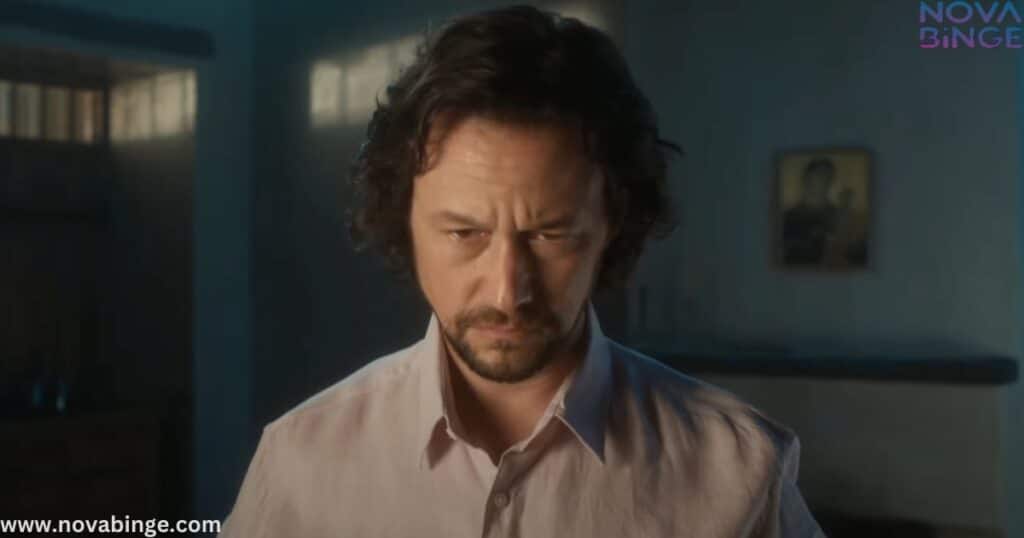
Crete
- Best Time to Visit: April to October for warm, sunny weather.
- How to Get There: Fly into Heraklion or Chania airports, or take a ferry from Athens.
- Must-See Spots:
- Chania Old Town
- Balos Lagoon (accessible by boat tour or adventurous drive)
- Samaria Gorge for hiking enthusiasts
Athens
- Best Time to Visit: March to May or September to November to avoid peak tourist season.
- How to Get There: Fly into Athens International Airport.
- Must-See Spots:
- Plaka neighborhood
- Syntagma Square
- Acropolis and Parthenon
Sounion
- Best Time to Visit: Any time of year, but sunset is particularly magical.
- How to Get There: Drive or take a bus from Athens (about 1.5 hours).
- Must-See Spots:
- Temple of Poseidon
- Nearby beaches for swimming and relaxation
Local Tip: Always carry water and sunscreen, especially when visiting archaeological sites which often have little shade.
The Impact of Killer Heat on Greek Tourism
The release of Killer Heat is expected to have a significant impact on Greek tourism, following in the footsteps of other films that have boosted visitor numbers to their filming locations.

Case Study: Mamma Mia! Effect
The 2008 film “Mamma Mia!” led to a 14% increase in tourism to the Greek island of Skopelos in the year following its release. Similarly, Killer Heat is anticipated to drive interest in its filming locations.
Preparing for Film Fans
Local businesses and tourism boards are gearing up for increased interest:
- Themed Tours: Several tour operators are developing Killer Heat-themed tours of Crete, Athens, and Sounion.
- Hotel Packages: Some hotels are offering special packages for fans wanting to stay where the cast and crew did.
- Local Experiences: Restaurants and shops are incorporating references to the film into their offerings.
Conclusion: The Enduring Allure of Killer Heat’s Greek Odyssey
From the sun-drenched beaches of Crete to the ancient ruins of Athens and the mythic coastline of Sounion, Killer Heat takes viewers on a thrilling journey through some of Greece’s most spectacular locations.
These settings do more than provide a beautiful backdrop; they become integral to the story, enhancing the mystery and adding layers of meaning to every scene.
As Elias Vardakis, the film’s production designer, notes: “Greece isn’t just where we filmed Killer Heat; it’s the soul of the movie.
Every location tells a story, adds tension, or reveals character. It’s a silent but powerful player in our narrative.”
Whether you’re a fan of gripping mysteries, a lover of beautiful cinematography, or a traveler seeking inspiration for your next adventure, Killer Heat offers something special.
It’s a testament to the enduring allure of Greece, a land where ancient myths and modern stories continue to unfold against a backdrop of unparalleled beauty.
So, as the credits roll and the mystery of Killer Heat is resolved, don’t be surprised if you find yourself planning your own Greek odyssey.
After all, sometimes the most thrilling adventures are the ones we embark on ourselves.
Frequently Asked Questions (FAQs) about Killer Heat
To satisfy your curiosity about Killer Heat and its stunning Greek island settings, here are answers to some commonly asked questions:
Were any sets built, or was it all filmed on location?
While the majority of Killer Heat was filmed on location to capture the authentic beauty of Greece, a few interior scenes were shot on purpose-built sets in Athens.
These sets were meticulously designed to match the architecture and atmosphere of their real-world counterparts. However, director Philippe Lacôte insisted on using actual locations for all exterior shots to maintain the film’s authenticity.
How long did filming take in each location?
The filming schedule for Killer Heat was carefully planned to make the most of each location:
- Crete: 4 weeks
- Athens: 2 weeks
- Sounion: 1 week
This schedule allowed the crew to capture each location in various lighting conditions and weather patterns, adding depth to the visual storytelling.
Did the cast learn any Greek for their roles?
Yes, several cast members took crash courses in Greek to add authenticity to their performances. Nick Bali’s actor, in particular, spent two months learning Greek before filming began.
While not all dialogue is in Greek, the actors’ efforts to incorporate the language added significant credibility to their characters.
Are there plans for a sequel in other Greek locations?
While there are no official announcements yet, rumors are circulating about a potential sequel.
Given the success of Killer Heat and the wealth of stunning locations Greece has to offer, fans are eagerly speculating about where a follow-up might be set.
The Greek islands of Santorini or Rhodes have been mentioned as possible locations.
How can fans recreate the Killer Heat experience in Greece?
For those inspired to follow in the footsteps of private investigator Nick Bali, several options are available:
- Book a Killer Heat themed tour: Several tour operators now offer packages that visit key filming locations.
- DIY Adventure: Use our guide in the “Travel Inspiration” section to plan your own trip to Crete, Athens, and Sounion.
- Local Experiences: Many restaurants and hotels in the filming locations now offer Killer Heat inspired menus or room packages.
Remember to respect local customs and the environment when visiting these beautiful locations.
What was the most challenging location to film in?
According to the production team, the most challenging location was Balos Lagoon in Crete. The remote Greek setting, while stunningly beautiful, presented logistical challenges.
Equipment had to be transported by boat, and the team had to be mindful of preserving the fragile ecosystem. However, the breathtaking results on screen made the extra effort worthwhile.
How did the locations influence the development of the mystery?
Philippe Lacôte has stated that the locations significantly shaped the story as it was adapted from Jo Nesbø’s “The Jealousy Man“.
The Greek island setting inspired new plot elements, with local myths and the landscape itself becoming integral to the mystery.
For example, the rock-climbing accident that kicks off the investigation was directly inspired by Crete’s rugged terrain.
By addressing these frequently asked questions, we hope to have given you an even deeper appreciation of the work that went into bringing Killer Heat to the screen.
The blend of captivating story, talented cast, and breathtaking Greek locations truly makes this film a unique cinematic experience.
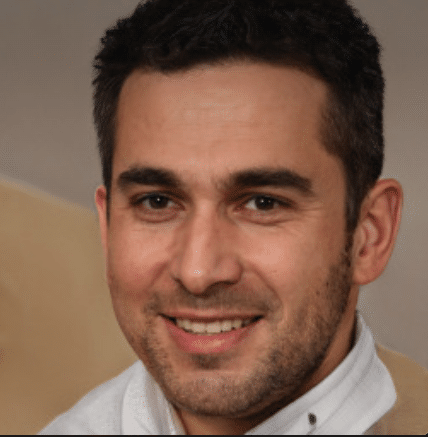
David Lee is a seasoned writer specializing in filming locations. With a keen eye for detail and a passion for cinema, David explores the stories behind iconic sites and shares unique insights that bring your favorite films and series to life.







